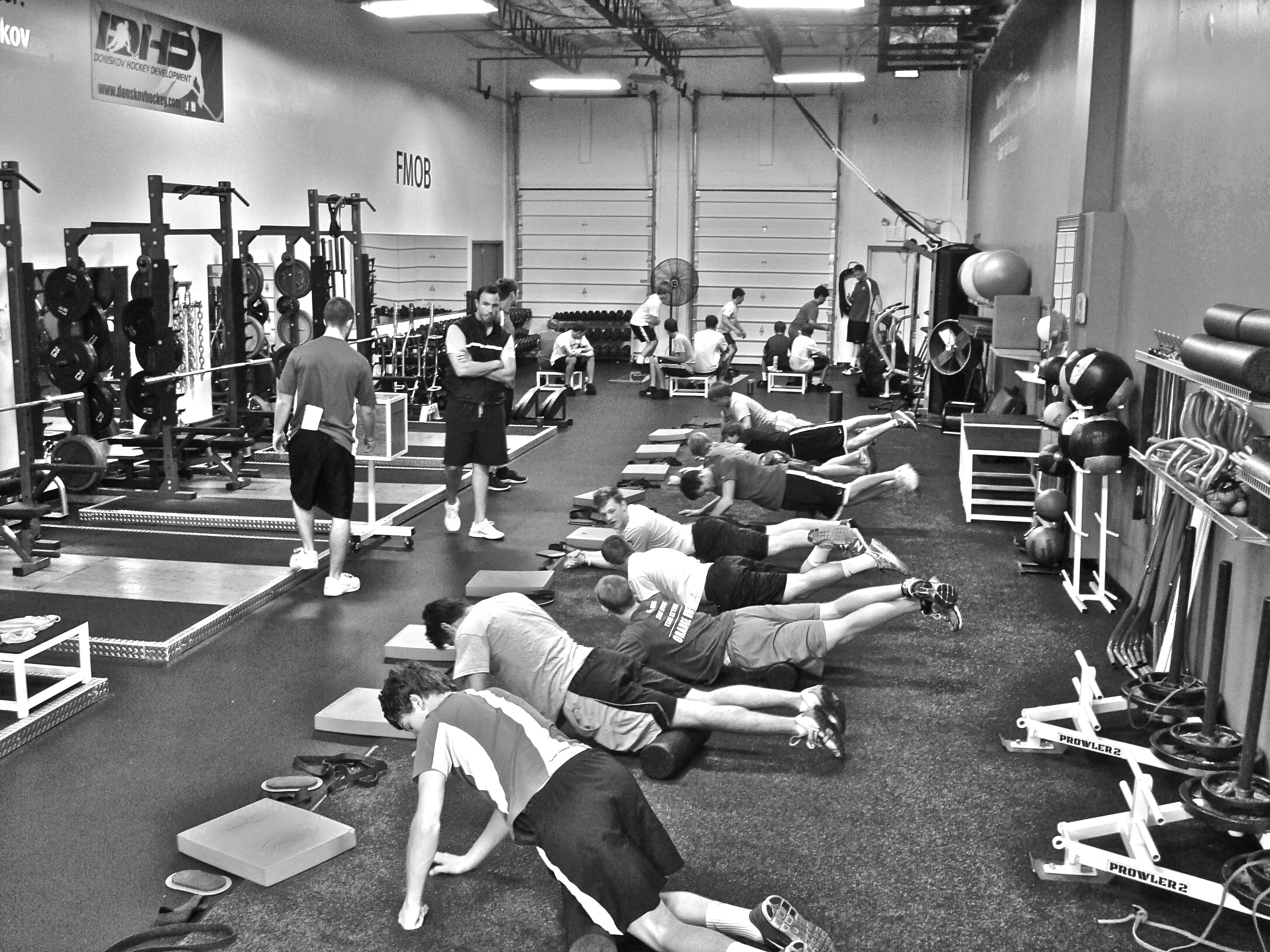Anthony Donskov
Anthony Donskov is the founder of DSC where he serves as the Director of Sport Performance. Donskov holds a Masters Degree in Exercise Science & is the author of Physical Preparation for Ice Hockey.
DSC Summer 2012 Program Wrap-Up
- Font size: Larger Smaller
- Hits: 3922
- Subscribe to this entry
- Bookmark
Another summer of programming is officially in the books at DSC. This year we had four full capacity Athletic Development programs with 50+ athletes. It’s always rewarding as a Coach to see both tangible and intangible results that our athletes’ have attained. It’s also a time to reflect on program design, results and areas of improvement for next year. Below are 5 new concepts/ideas that we implemented into this summers Athletic Development program.

1.) Tri-Phasic Training: This concept was taken from Cal Dietz and his book Tri-Phasic Training. Every dynamic movement incorporates an eccentric, isometric and concentric contraction. Each of these movements serves to enhance the Stretch Shortening Cycle (SSC) and promote a greater rate of force development. Although we did not adhere to percentage based loading schemes we did use this method for our returning athletes with many of our major lifts (bench press, Trap Bar DL, RFESS). Athlete’s focused on bar velocity during each three week phase always making sure to explode during concentric action. I embraced the concept using temps of (5/0/0) eccentric, (0/2/0) isometric and explosive during our final concentric phase. It was great to see the strength increases throughout the course of the summer and yet another way to “skin the cat” in terms of seeking adaptation for our returning athletes.
2.) Subjective Stress Score: I had the opportunity to meet Joel Jamieson at this years BSMPG conference in Boston. I asked him his recommendations on gauging stress levels in large group settings where HRV was not an option. His response, a simple 1-10 (1=Low stress, 10=Over Stressed) subjective stress assessment prior to and after each workout. Although this is not high tech, high-end assessment, it did give us important feedback as Coaches on when to “take a foot of the gas pedal” in terms of stress management.
3.) Second Set Grind: Last summer (2011), many of our returning athletes left reps “under the bar” failing to attain all of the desired repetitions (their neuro-muscular systems were fried by the time their final “working set” came around). If we were trying to embrace Coach Boyles’ “minimally effect dose” philosophy, we were overdosing our athletes with stress. This year, we adopted the second set grind a.k.a. The “Big Dog” Set. Here are a few details about the set.
- Big Dog set is always the 2nd “working set”
- Load (pick a weight where you can leave 1-2 reps in the bank)
- Attain all desired reps
- Deload 3rd “working set”
4.) Hang Clean Progression: I have really been impressed with the quality of Olympic Lifting out of The University of North Dakota and Strength Coach Nate Baukol. Several months ago he posted his lifting progressions on StrengthCoach.com. In doing so, this summer we added his “Full Trap Clean” into our Hang Clean Progression at DSC. I was very happy with the result. This progression really preaches full hip extension, bar placement and catch position. Here is the progression we use at DSC.
- Hands Free Front Squat
- Front Squat
- Full Trap Clean
- Hang Clean (from high hang)
- Hang Clean
Full Trap Clean
5.) Breathing: I have had the opportunity to take several PRI (Postural Restoration Institute) courses this year and the experience has been rewarding to say the least. I’m a HUGE fan. Prior to these courses I undervalued and quite frankly ignored breathing patterns and their respective postural implications. I have used several PRI breathing patterns prior to our mobility work and have used it extensively AFTER our workouts to enhance parasympathetic tone and aid in recovery/regeneration. Our athletes LOVE it.
It’s our job as Coaches to provide a “One Day Better” thought process with regards to program design. Our programs are constantly evolving in order to provide our athletes with a safe, results driven protocol. We will continue to make minor changes/adjustments to improve the process.
Anthony Donskov, MS, CSCS, PES, is a former collegiate and professional hockey player, founder of Donskov Strength and Conditioning Inc., (www.donskovsc.com) and Head Instructor/Director of Off-Ice Strength and Conditioning for Donskov Hockey Development (www.donskovhockey.com). He can be reached at info@donskovsc.com .
Facebook: http://www.facebook.com/pages/Donskov-Strength-and-Conditioning-Inc/111694352189187
Twitter: http://twitter.com/Donskovsc
